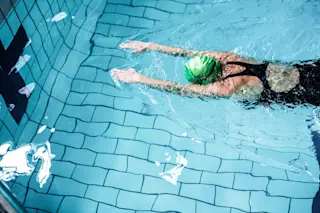In June, mercury levels rise across the U.S., prompting many to visit their local pool, lake or beach for a refreshing dip in cool water. But swimming is more than just a popular summer pastime; it’s also one of the best exercises for overall health. The unique water environment creates physiological changes in the body that set swimming apart from land-based activities and make it a rigorous workout accessible to people of all ages and abilities.
“The beauty of water is that it produces buoyancy,” says Bruce Becker, a clinical professor in the Department of Rehabilitation Medicine at the University of Washington.
Becker has studied the rehabilitative potential of swimming for 40 years, and he witnessed the water’s healing effects after a child diagnosis of polio. He says his physician used aquatic therapy to keep his limbs strong and agile as he recovered from the virus.
“It allowed me to ...














